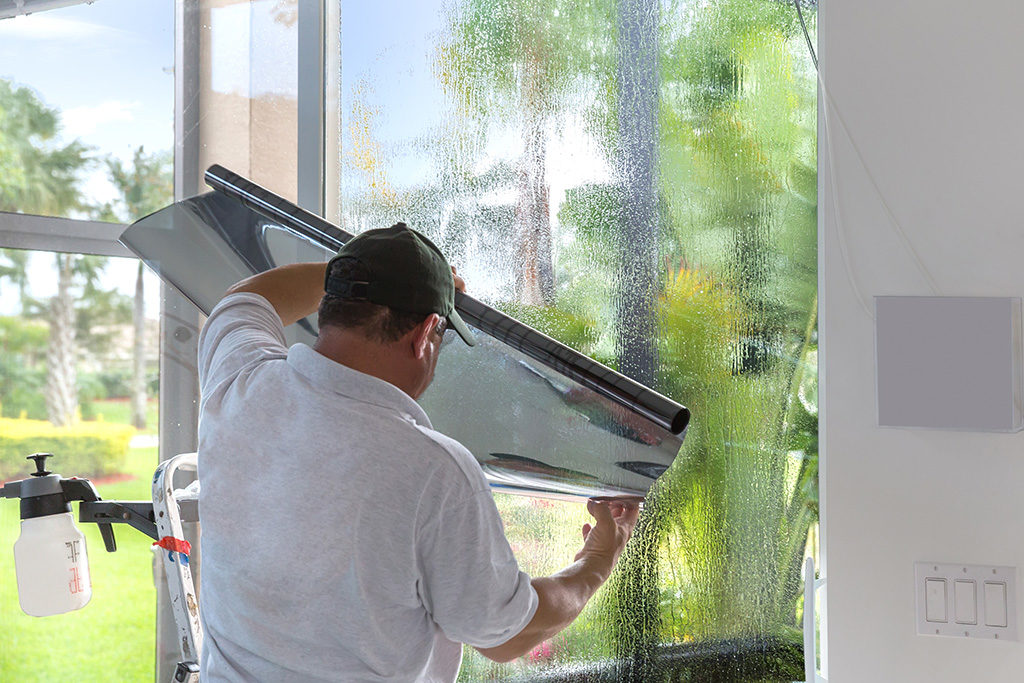Improve Your Home and Reduce the Heat Load on Your House With Window Tinting
Tint on car windows is a common sight in almost every city. Although it’s mainly for style, the tint also reduces the glare into the vehicle. This same concept applies to your household windows. Views to the outside world may be intriguing, but they allow a lot of heat to move into and out of the house. Consider how you can save money on your yearly air conditioning bill by installing window tinting.

Light Equals Heat
You might enjoy the light that pours into your living room in the spring, but the area heats up very quickly. Sunlight consists of ultraviolet radiation, which is a mixture of light and heat. As the sun moves through your bare windows, the carpet and interior heat up in response. If it’s hot enough, you might turn up the air conditioning so that comfort is achieved once again. The battle between the incoming sunlight and your air conditioner only results in high energy bills each month. Home window tinting can do wonders for your overall bill.
Tinting and Filtering Features
Home window tinting is merely a film that sticks to the glassy surface. It’s normally applied to the window’s interior so that the exterior elements don’t break down the materials. You’re still able to look through the tint because it acts like sunglasses on your windows. The exterior will look slightly darkened, but you’ll still see details of everything nearby. The darkened appearance allows built-in filters to curb heat loads on the home by essentially bouncing them away. You’re left with a cool window that just provides some light into the interior.
Choosing a Type
There are many tint types to choose from in the marketplace. Each manufacturer has their specific filter blends. In general, they all operate in the same manner. Your biggest consideration is tint color. From limo dark to light gray, tint colors are produced with varying darkness levels. Try to take a few samples home, and press them against the window. Imagine how the window will look with complete coverage. South-facing windows may need darker colors than north-facing types, for example. Always evaluate every facet of your potential installation before making a tint decision.
DIY or Professional Installation
You’re welcome to install the tint yourself or call the professionals. Adding the tint to the glass is similar to wallpapering a room. Roll out the tint, squeeze out all of the air bubbles and trim it to size. For some residents, however, performing the installation might be frustrating because of the intricate work to be completed. Professionals charge a small fee to cover this installation. It might be worth the investment to complete it with the experts in tow. In many cases, the tint will have a warranty and longer lifespan with a proper application.
Benefits Into the Winter
Some residents might be concerned about tint being a problem in the colder months. If light doesn’t move into the home because of the tint’s filtering process, your heating bills might rise. However, tint improves your energy bill in the winter too. Although light still bounces off of the tint, the interior remains insulated from any cold winds. As a result, you’ll run the heater at a lower temperature as heat remains in the home for longer than before. Tint works for both hot and cold applications, which only benefits your HVAC system in the end.
Considering the Privacy Factor
Although a reduced heat load on your home is motivation enough, tint also offers the benefit of privacy. You can clearly see out of the window, but passersby have a difficult time. The interior isn’t even seen through the tint regardless of its color. People see their reflection in the tint. If you live in a densely populated area, privacy is a major concern. Tint protects the interior from prying eyes that might be tempted by your valuables near the windows, including electronics and fine furniture.
Most tint lasts for many years without any issues. Consider new tint when you notice any areas that are peeling or cracked. Any damage to the tint will only reduce its efficacy on sunlight radiation. You want picture-perfect tinting that will only keep you cool in the spring and summer months.